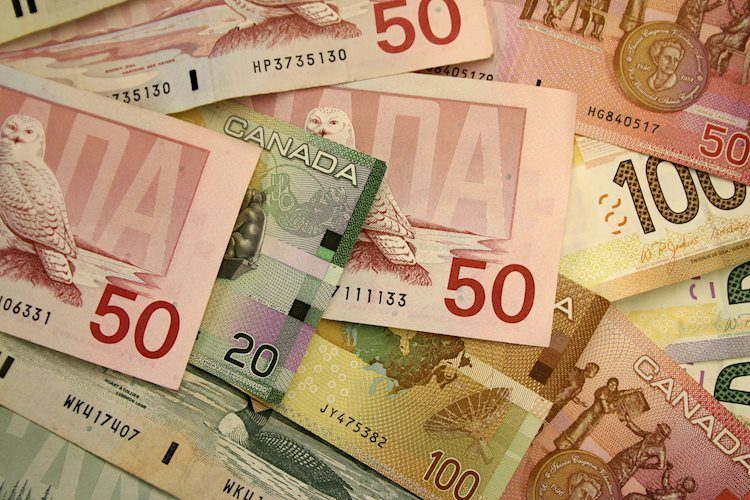- The Canadian Dollar rose around half of a percent against the Greenback.
- Canada reports still disappointing housing price figures, but CAD rises anyway.
- Post-Fed rate cut landscape sees the Greenback broadly softer.
The Canadian Dollar (CAD) found higher ground on Monday, clipping one-half of one percent above the Greenback as investors find firmer footing after the Federal Reserve (Fed) trimmed rate cuts for the first time in over four years last week.
Canadian housing price figures missed the mark to kick off the new trading week, but the CAD found itself bolstered into the high end anyway as broader markets continue to squeeze the US Dollar lower. US data also came in mixed on Monday, helping to keep overall market momentum tepid.
Daily digest market movers
- The Canadian Dollar rallied on Monday, bolstered by post-cut Fed environment.
- Canadian News Housing Price Index slumped to a 0.0% MoM print in August, easing back from the previous 0.2% and missing the expected 0.1% uptick.
- On an annualized basis, the Canadian New Housing Price Index also hit a flat 0.0%, down from the previous annualized period’s underperforming 0.1% YoY.
- US Purchasing Managers Index (PMI) figures for September went lopsided on median market forecasts, with the Manufacturing PMI backsliding to a 14-month low of 47.0. The Services PMI component also fell, but less than expected, pumping the brakes at 55.4.
- CAD traders will be keeping an eye out for Bank of Canada (BoC) Governor Tiff Macklem on Tuesday, who will be giving talking points at the International Finance and Canadian Bankers Association Canada Forum, in Toronto.
Canadian Dollar price forecast
The Canadian Dollar (CAD) found a fresh three-week high against the US Dollar (USD) on Monday, sending the USD/CAD pair tumbling back below 1.3550 as intraday price action scrambles to find a foothold as bids slip below 1.3500. USD/CAD recently staged a technical freeze just south of the 200-day Exponential Moving Average (EMA) near 1.3600, but broad-market short Greenback pressure has left the pair on the precipice of confirming a fresh leg lower on the daily candlesticks.
USD/CAD daily chart
Canadian Dollar FAQs
The key factors driving the Canadian Dollar (CAD) are the level of interest rates set by the Bank of Canada (BoC), the price of Oil, Canada’s largest export, the health of its economy, inflation and the Trade Balance, which is the difference between the value of Canada’s exports versus its imports. Other factors include market sentiment – whether investors are taking on more risky assets (risk-on) or seeking safe-havens (risk-off) – with risk-on being CAD-positive. As its largest trading partner, the health of the US economy is also a key factor influencing the Canadian Dollar.
The Bank of Canada (BoC) has a significant influence on the Canadian Dollar by setting the level of interest rates that banks can lend to one another. This influences the level of interest rates for everyone. The main goal of the BoC is to maintain inflation at 1-3% by adjusting interest rates up or down. Relatively higher interest rates tend to be positive for the CAD. The Bank of Canada can also use quantitative easing and tightening to influence credit conditions, with the former CAD-negative and the latter CAD-positive.
The price of Oil is a key factor impacting the value of the Canadian Dollar. Petroleum is Canada’s biggest export, so Oil price tends to have an immediate impact on the CAD value. Generally, if Oil price rises CAD also goes up, as aggregate demand for the currency increases. The opposite is the case if the price of Oil falls. Higher Oil prices also tend to result in a greater likelihood of a positive Trade Balance, which is also supportive of the CAD.
While inflation had always traditionally been thought of as a negative factor for a currency since it lowers the value of money, the opposite has actually been the case in modern times with the relaxation of cross-border capital controls. Higher inflation tends to lead central banks to put up interest rates which attracts more capital inflows from global investors seeking a lucrative place to keep their money. This increases demand for the local currency, which in Canada’s case is the Canadian Dollar.
Macroeconomic data releases gauge the health of the economy and can have an impact on the Canadian Dollar. Indicators such as GDP, Manufacturing and Services PMIs, employment, and consumer sentiment surveys can all influence the direction of the CAD. A strong economy is good for the Canadian Dollar. Not only does it attract more foreign investment but it may encourage the Bank of Canada to put up interest rates, leading to a stronger currency. If economic data is weak, however, the CAD is likely to fall.
Read the full article here

